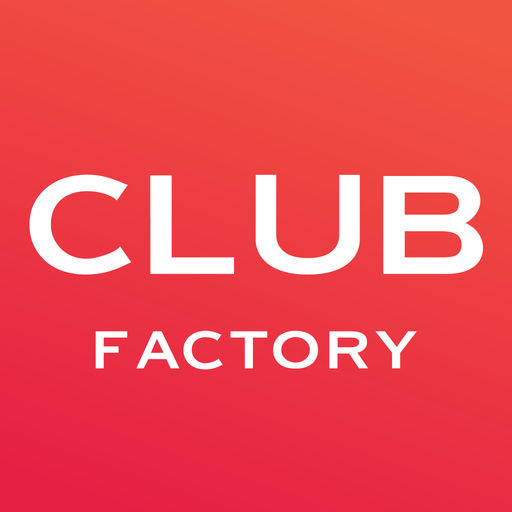Primer: Harry Zhang has been around the space for a long time. He co-founded Lino Network, a blockchain built for the content economy, and DLive, a fairer YouTube/Twitch for content creators. Project Galaxy is his latest project. Their goal is to build the infrastructure that powers both on-chain and off-chain credentials. Learn what are the ramifications of his project in this episode of the Zima Red Podcast.
Background
Graduated from Berkeley studying CS and Stats in 2017
Joined an e-commerce platform called Club Factory
Entered crypto in 2018, where he co-founded Lino and DLive
Lino was a blockchain built for the content economy
DLive was the first application built on Lino
Sold both Lino and DLive in 2019
Currently working on Project Galaxy
Club Factory
An e-commerce platform
Built a data infrastructure that collected data from clothing suppliers in China
Chose the best supplier in China and sold that to India and some countries in the Middle East
Tested ads in India, United States, and Europe. Their data model worked the best in India and they focused on that country
Did not know that e-commerce in India was really big. Became 1 of the top 3 e-commerce platforms there
How Did He Enter Crypto?
Best friends from college started to do something in crypto in 2017
Found out that content creators were not rewarded fairly
YouTube and Twitch takes 20-30% of revenue from streamers
“We wanted to build a platform that content creators can earn permissionlessly, while most of the revenue from their fans should go to them directly.”
- Harry Zhang
What attracted him to crypto and blockchain was that it can be used to create a content economy for content creators
Built the Lino blockchain for content creators
Lino never went to Mainnet. Both Lino and DLive were sold to BitTorrent in 2019
DLive
Overall idea was to build a fairer YouTube and Twitch
Had watch-and-earn in 2018
Streamers can reward users for their activities
Thoughts After Selling Both Entities
Was an unfortunate exit for them
Did not want to sell the company but had to as they were running out of cash in the bear market
After 2019, his team continued to explore what else they could do in the space
Realized that crypto projects do not have a good way to manage their communities. All of the following are not sustainable:
Airdrops
Giveaways
Farming campaigns
Found NFTs more vivid. Could be used to give people a status on top of a reward
Project Galaxy
In Project Galaxy, they are building the infrastructure to power both on-chain and off-chain credentials
Credentials can be anything:
Off-Chain: e.g. whether you follow someone on Twitter, number of Github followers, etc.
On-Chain: e.g. where you borrowed money and never got liquidated, whether you participated in governance, etc.
Building tons of plug-and-play modules for people to utilize credentials in their project
How Does The Off-Chain Credentials Work?
Currently, they are curating off-chain credentials in a centralized way — taking data from Twitter API, Github, etc.
Projects can come to them and request for the information
In their Shadowy Super Coder Campaign, they curated 100k Ethereum contract deployers on Ethereum Mainnet and partnered with more than 12 partners. These partners sponsored more than 300 million worth of perks to the NFT holders
Making It More Decentralized
Can have more data providers coming in to provide the data
In the short to mid term, they will allow people to come in to be data providers
Examples Of On-Chain Credentials
Financial-related credentials that can be used to calculate credit scores
For lending protocols such as Compound and Aave, the protocols could consider offering lower collateralization ratios to borrowers with good credit scores
Are On-Chain Credentials Better Than Off-Chain Credentials?
Doesn’t think that on-chain credentials are better than off-chain credentials
Most contributions are not on-chain activities (e.g. contributions on Discord, forums, etc.)
In the future, they will be supporting Sybil-resistant algorithms to check whether a user is a bot
Project Galaxy Spaces
Dedicated space for each of their partners to create campaigns
Examples Of Successful Use Cases
Yearn wanted to reward WOOFY token holders
For every week that someone holds 2000 WOOFY tokens, they were given one chance to claim a mystery box that will reward them with one out of six WOOFY NFTs
These NFTs are badges that represent one’s social status in the Yearn community
After 3 days of the campaign launch, the WOOFY token holders increased by over 30%
Factors affecting campaign success:
Creation of dynamic campaigns where users can do something and get something in return
Adding utility to the NFTs (e.g. NFTs used for voting)
Engagement Rates On Project Galaxy
More than 80% of all campaigns have higher than 60% participation rate
Received feedback from their partners that people really liked the NFTs
“And they're showing off [Project Galaxy NFTs] in their Discord chat, on their Twitter, as a badge, as a achievement, or as a social status, right? So these are great ways for them to increase engagement.”
- Harry Zhang
Launching A Campaign
Contact him or his team members
They will set up the space and campaign for you
Launching their permissionless dashboard soon. Once it is live, users can create campaigns on their own. They do not need to know how to code. They just need to use their tools
Is There Multi-chain Support?
They can work on any EVM compatible chain
Already deployed on Ethereum Mainnet, BSC, Arbitrum, and Polygon
Looking to deploy on Avalanche soon
Will work on Solana down the road
Which Sector Is He Most Excited About?
Most excited about NFTs with utility
Really like JPEG projects as they are used to indicate social status
In mid to long term, NFTs cannot be just JPEGs. They have to become something much larger
Thoughts On The Current Crypto And NFT Markets
Both markets are very hot right now
Tons of projects are coming out with crazy valuations at a very early stage
Thinks that the top tier JPEG projects will dominate the market over the long term vs new JPEG projects
Best Things And Hardest Things About Being A Founder
Hardest Things
Need to keep up with everything
Best Things
It’s always exciting everyday
If He Has Unlimited Resources, What Would He Do?
To build up the wallet infrastructure:
Improve user experience in onboarding users from Web2
Improving efficiency for existing users on Web3
Grand 5-10 Year Vision
To have a great network of credential data for Project Galaxy
Want to see Galaxy as a core infrastructure for the space
Single Favourite NFT
The Shadowy Super Coder NFT
Actually deployed a contract a while ago and was eligible for it
Those who have deployed contracts on Ethereum Mainnet should come to Project Galaxy’s website to claim it
Most Controversial Thought On NFTs
Doesn’t like the fact that there’s only 8000 copies available for Loot Project
Can’t imagine how any DApp or game will be built for just this amount of users in the next 5-10 years
If He Could Improve Something In The Space
Wants to scale up and improve the overall infrastructure of the space
Someone He Looks Up To And Why
Looks up to Elon Musk
As a founder, he knows about the problems a founder would face
Admires how Elon Musk can have the conviction and will to overcome all these problems
NFT Ecosystem In 3 Years
NFTs having more use cases
Excited to see how other projects come in and give utility to CryptoPunks, Bored Apes, etc.
All information presented above is for educational purposes only and should not be taken as investment advice. Summaries are prepared by The Reading Ape. While reasonable efforts are made to provide accurate content, any errors in interpreting and summarizing the source material are ours alone. We disclaim any liability associated with the use of our content.








